Email sales@AllianceChemical.com for 24/7 Expert Support
-
512-365-6838
-
Acetic Acid Glacial - Food Grade
Category : Acids
$24.35
Liquid error (snippets/product-blocks line 100): divided by 0
Off
Unit price
/
Shipping Notice: Possible Hazmat Fees
💡 Smart Shipping Tip: Quart & Liter Sizes Often Avoid Hazmat Fees
This size may be classified as hazmat and can incur additional carrier fees. See shipping guide
- ✅ Good news: 1 Quart containers qualify as "Limited Quantity" and bypass hazmat rules
- 💡 Pro tip: Order multiple 1 Quart containers to avoid hazmat fees entirely
- 💰 Hazmat fees can get expensive - especially for larger containers (carrier charges, not our markup)
- 🚚 Ground shipping only - no expedited options for sizes over 1 Qt/1L
Required by 49 CFR § 173.150 for chemical containers larger than 1 quart. Actual fees shown at checkout. View our complete shipping guide →
✅ Great Choice! No Hazmat Fees
1 Quart containers qualify as "Limited Quantity" and avoid hazmat shipping fees.
- 🚀 Faster shipping: Eligible for expedited shipping options including air transport
- 💰 No hazmat fees: Ships as "Limited Quantity" per DOT regulations
- 📦 Convenient size: Perfect for testing or smaller applications
- ♻️ Smart choice: Order multiple quarts to get the volume you need without hazmat charges
Exempted under 49 CFR § 173.150 Limited Quantity provisions for containers ≤1 liter/quart. Learn more in our shipping guide →
Quantity
Size:
Variation:
-
$24.35Delivery every$23.13
-
$33.92Delivery every$32.22
-
$48.65Delivery every$46.22
-
$72.83Delivery every$69.19
-
$52.83Delivery every$50.19
-
$84.40Delivery every$80.18
-
$139.15Delivery every$132.19
-
$4,228.16Delivery every$4,016.75
-
$200.18Delivery every$190.17
-
$760.41Delivery every$722.39
-
$5,580.66Delivery every$5,301.63
-
$512.79Delivery every$487.15
-
$1,529.22Delivery every$1,452.76
-
$5,002.79Delivery every$4,752.65
-
$5,500.00Delivery every$5,225.00
-
$6,270.00Delivery every$5,956.50
$24.35
Liquid error (snippets/product-sticky-blocks line 69): divided by 0
Off
Unit price
/
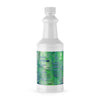
Acetic Acid Glacial - Food Grade
$24.35
Liquid error (snippets/sticky-product line 56): divided by 0
Off
Unit price
/
Size:
Variation:
-
$24.35Delivery every$23.13
-
$33.92Delivery every$32.22
-
$48.65Delivery every$46.22
-
$72.83Delivery every$69.19
-
$52.83Delivery every$50.19
-
$84.40Delivery every$80.18
-
$139.15Delivery every$132.19
-
$4,228.16Delivery every$4,016.75
-
$200.18Delivery every$190.17
-
$760.41Delivery every$722.39
-
$5,580.66Delivery every$5,301.63
-
$512.79Delivery every$487.15
-
$1,529.22Delivery every$1,452.76
-
$5,002.79Delivery every$4,752.65
-
$5,500.00Delivery every$5,225.00
-
$6,270.00Delivery every$5,956.50
Ask a question
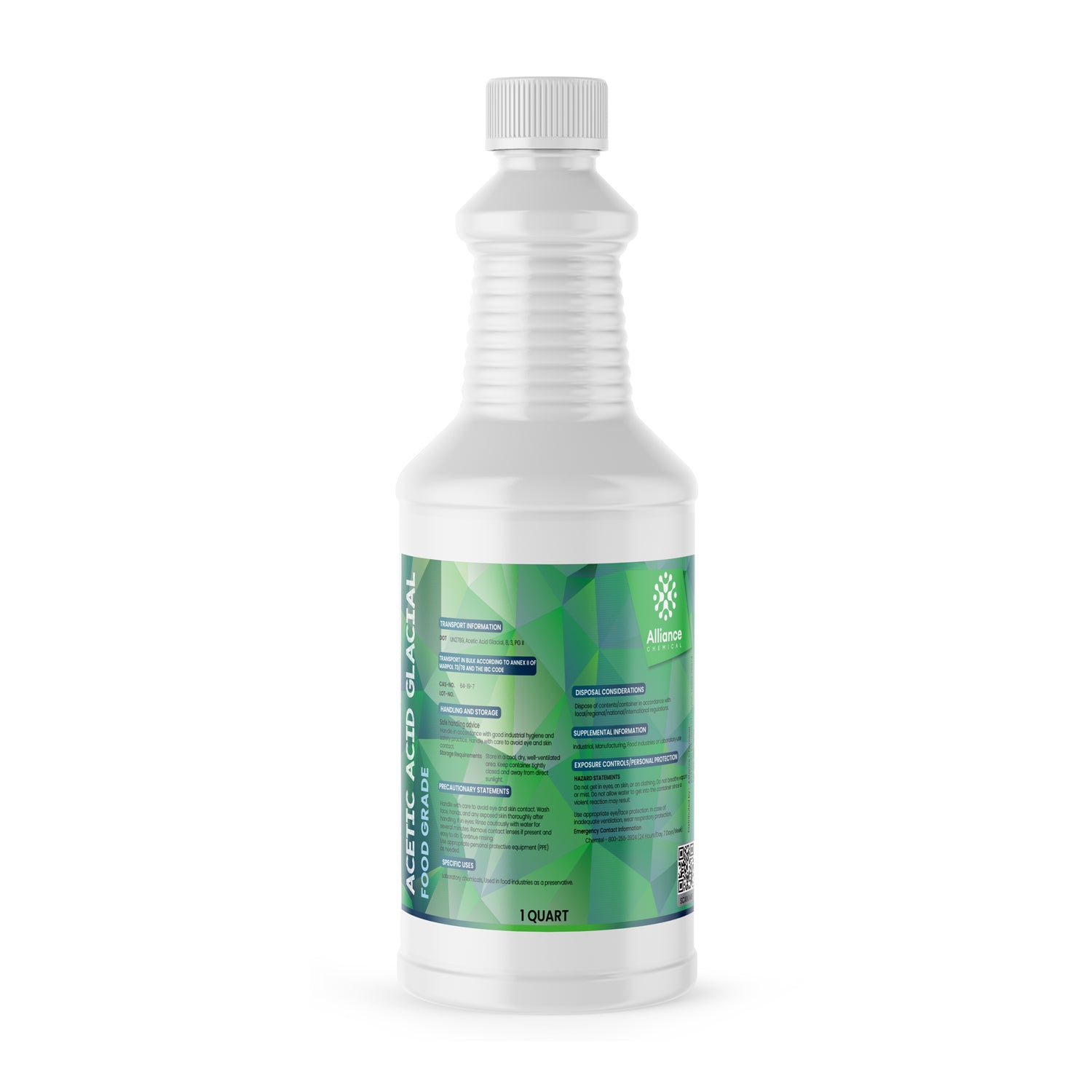
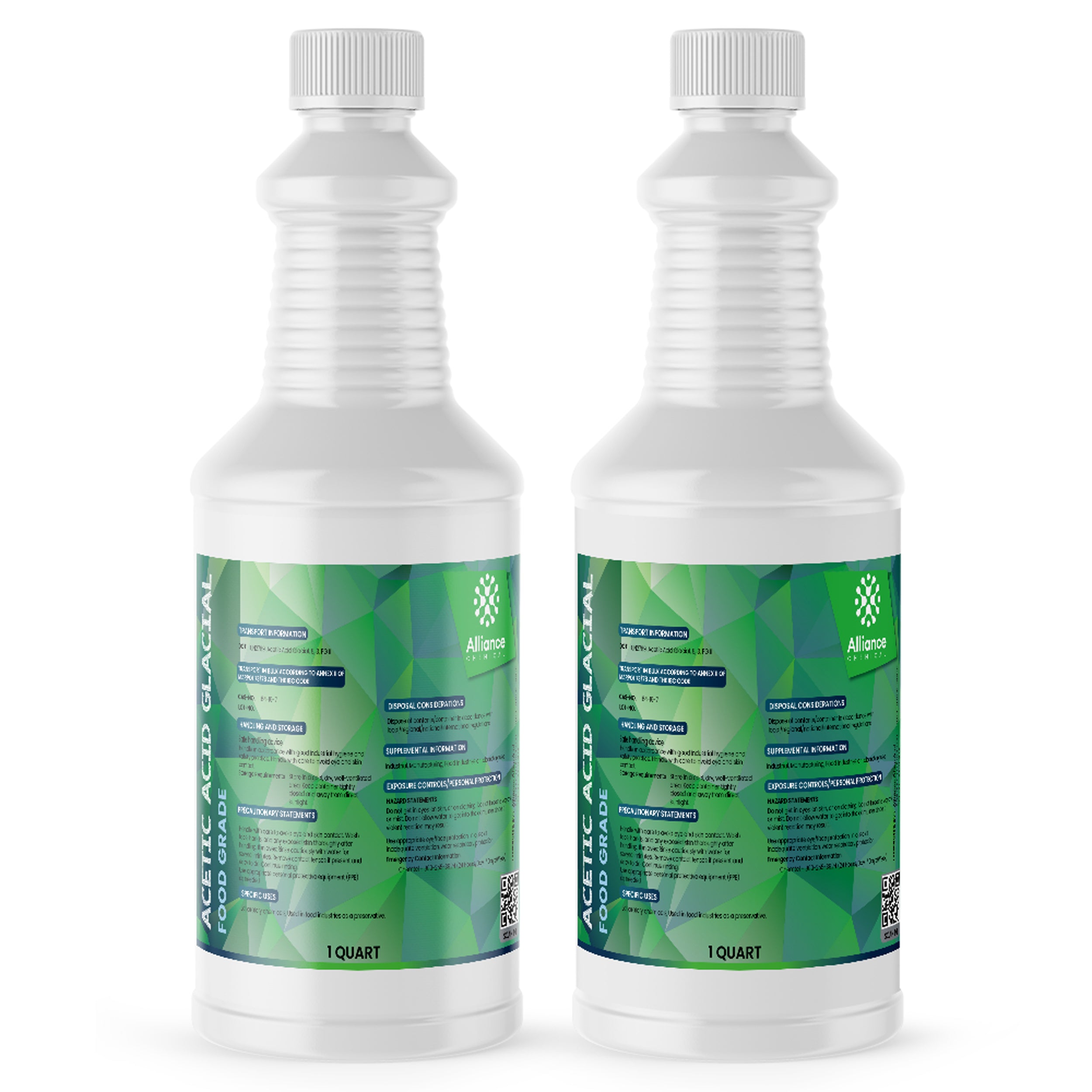
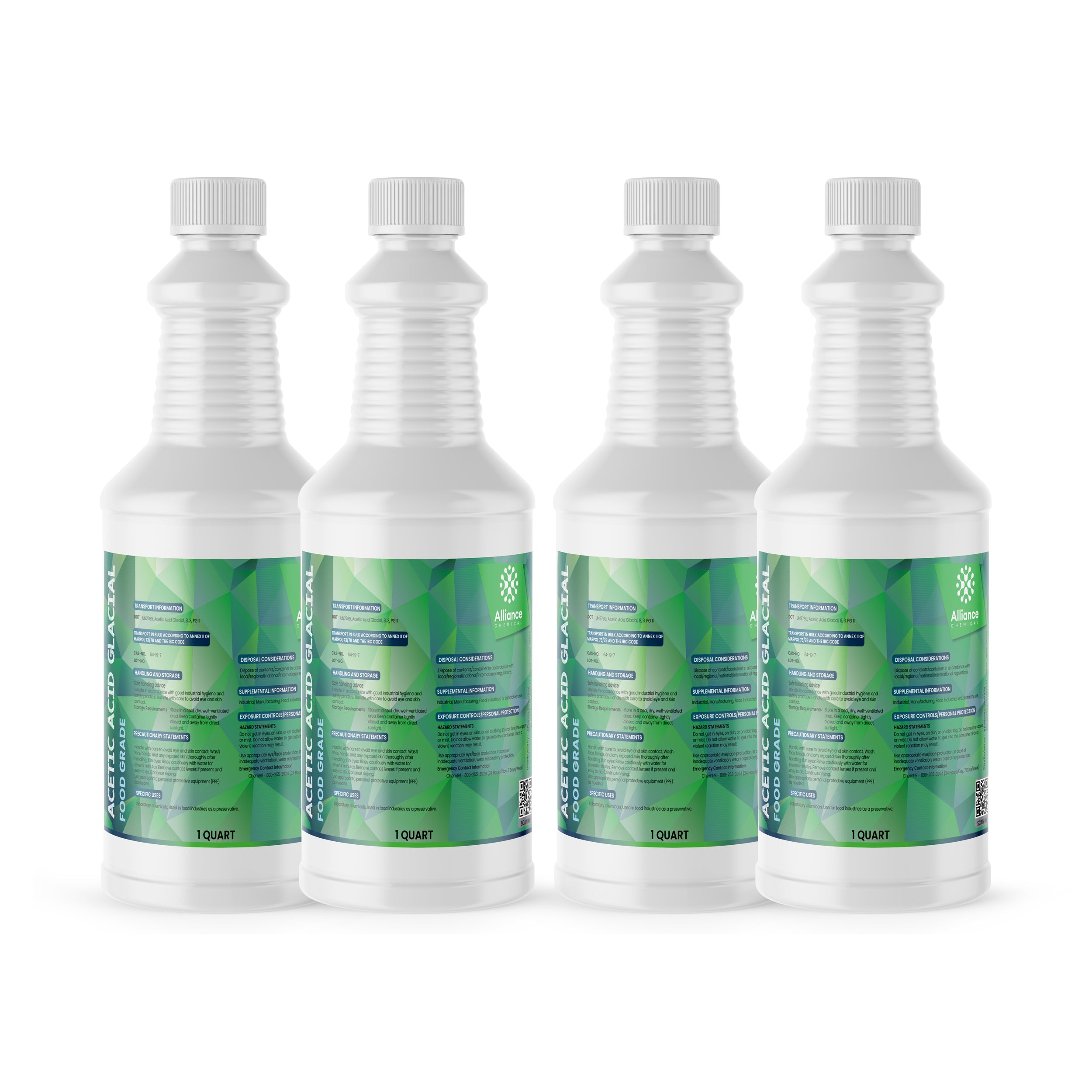
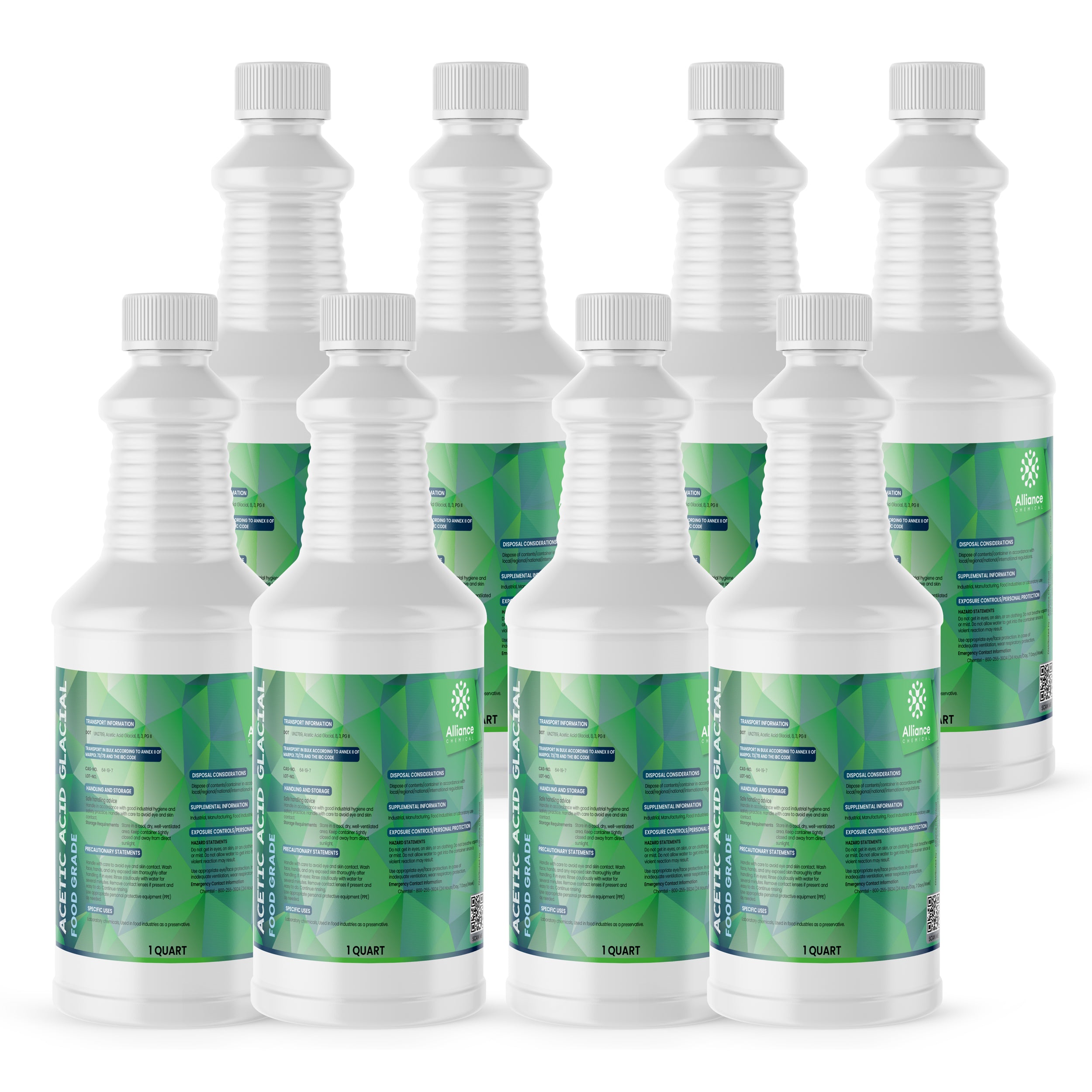

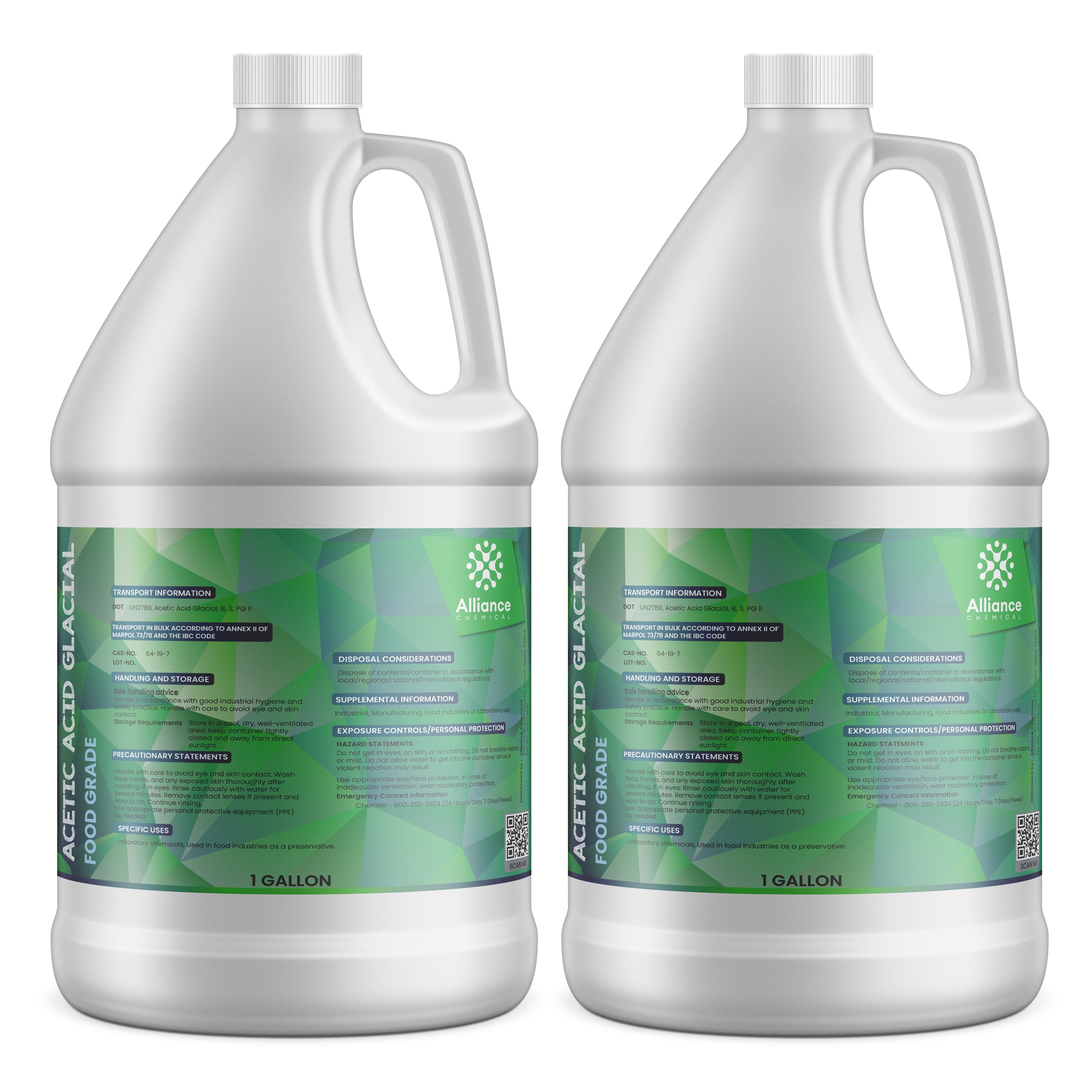
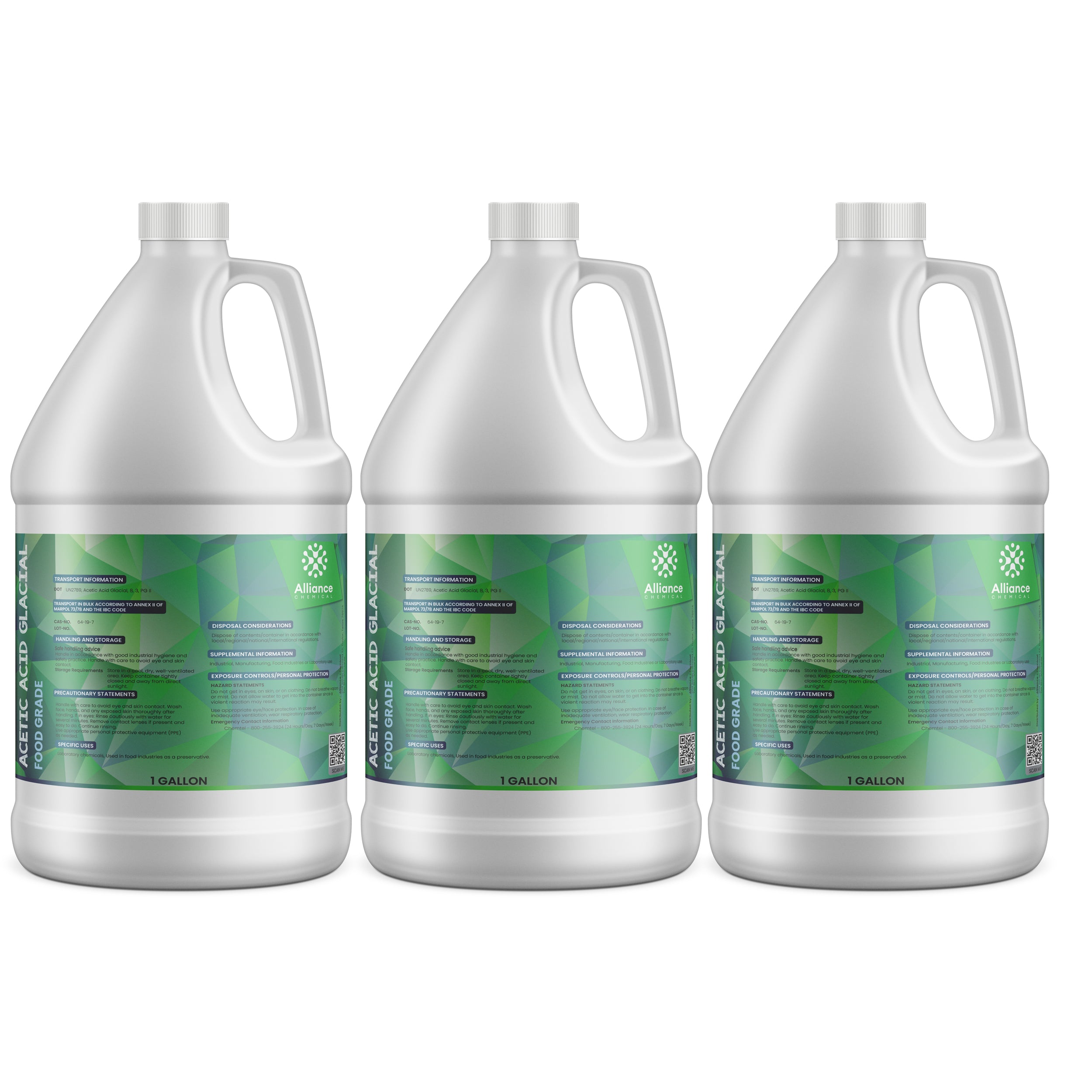
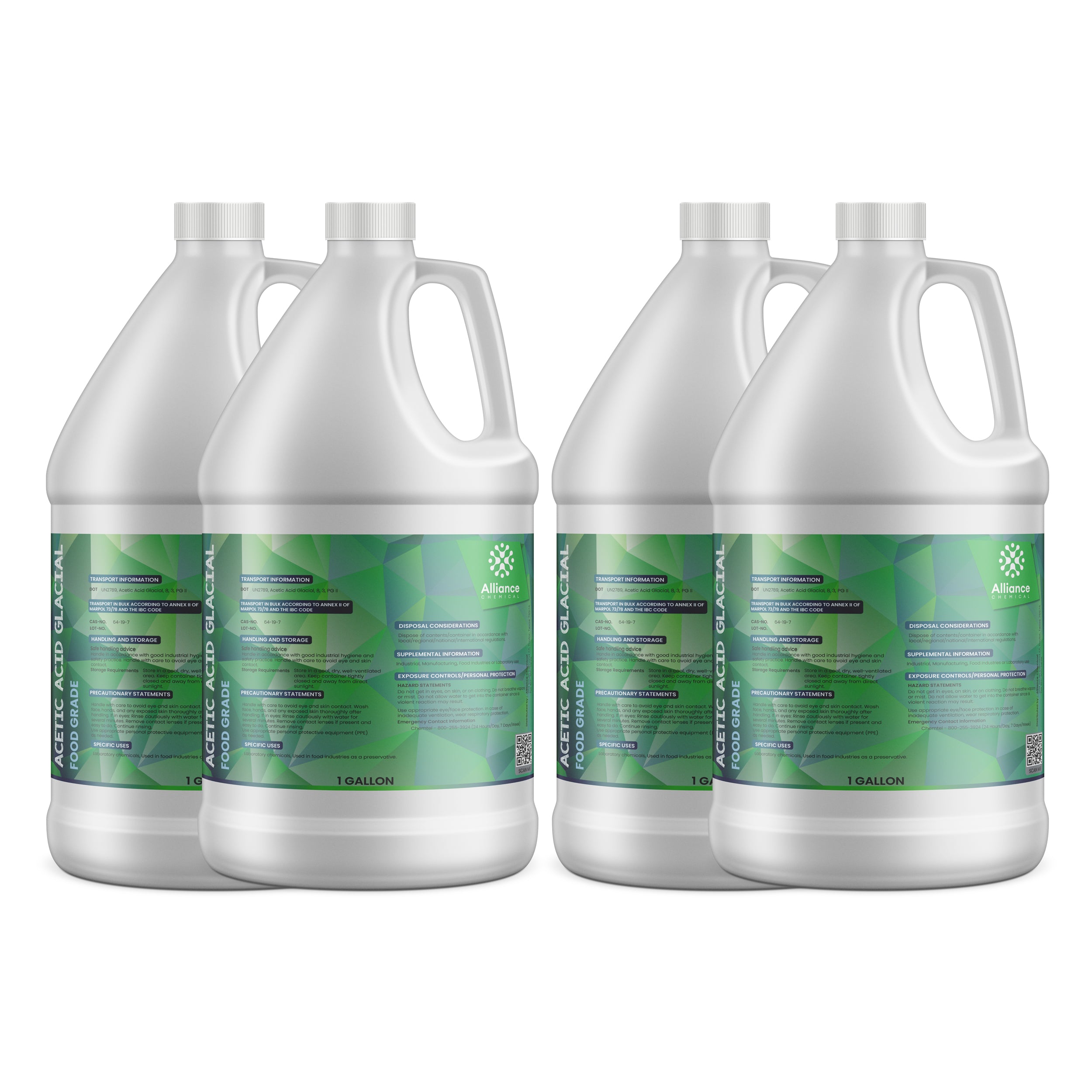
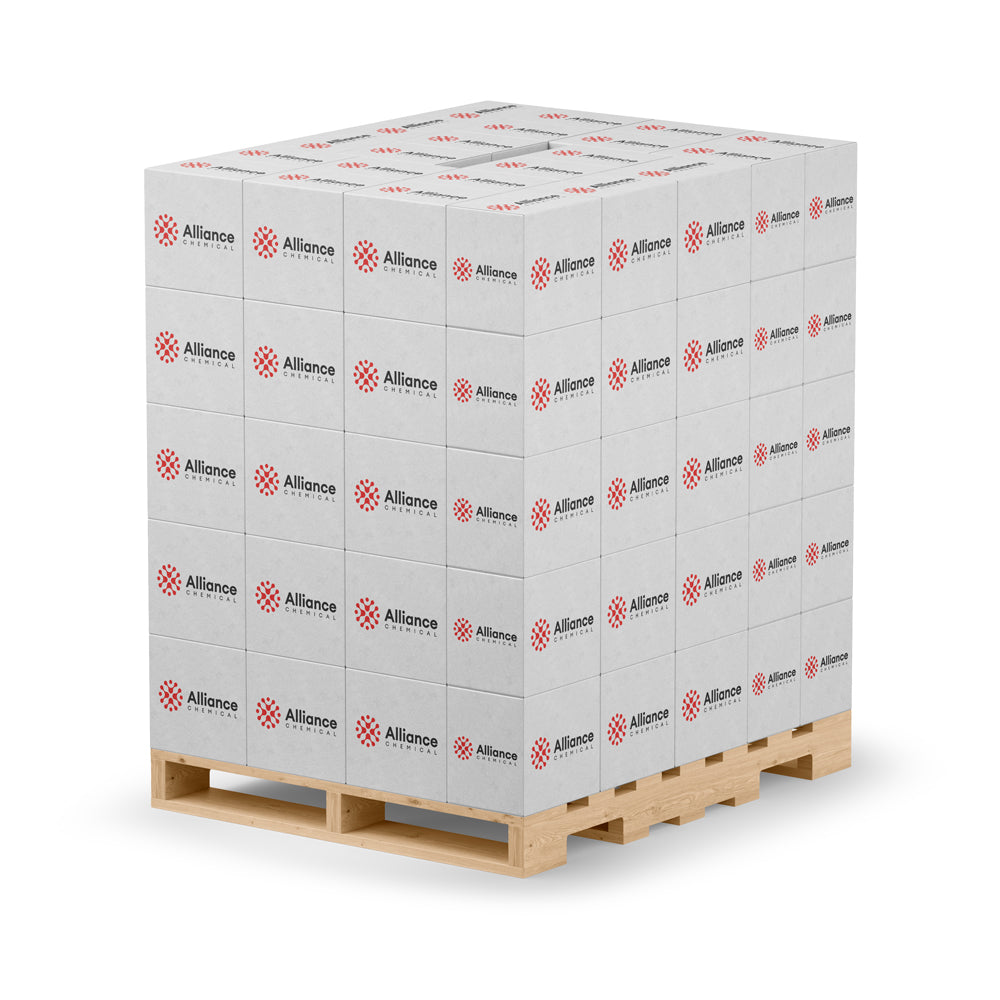
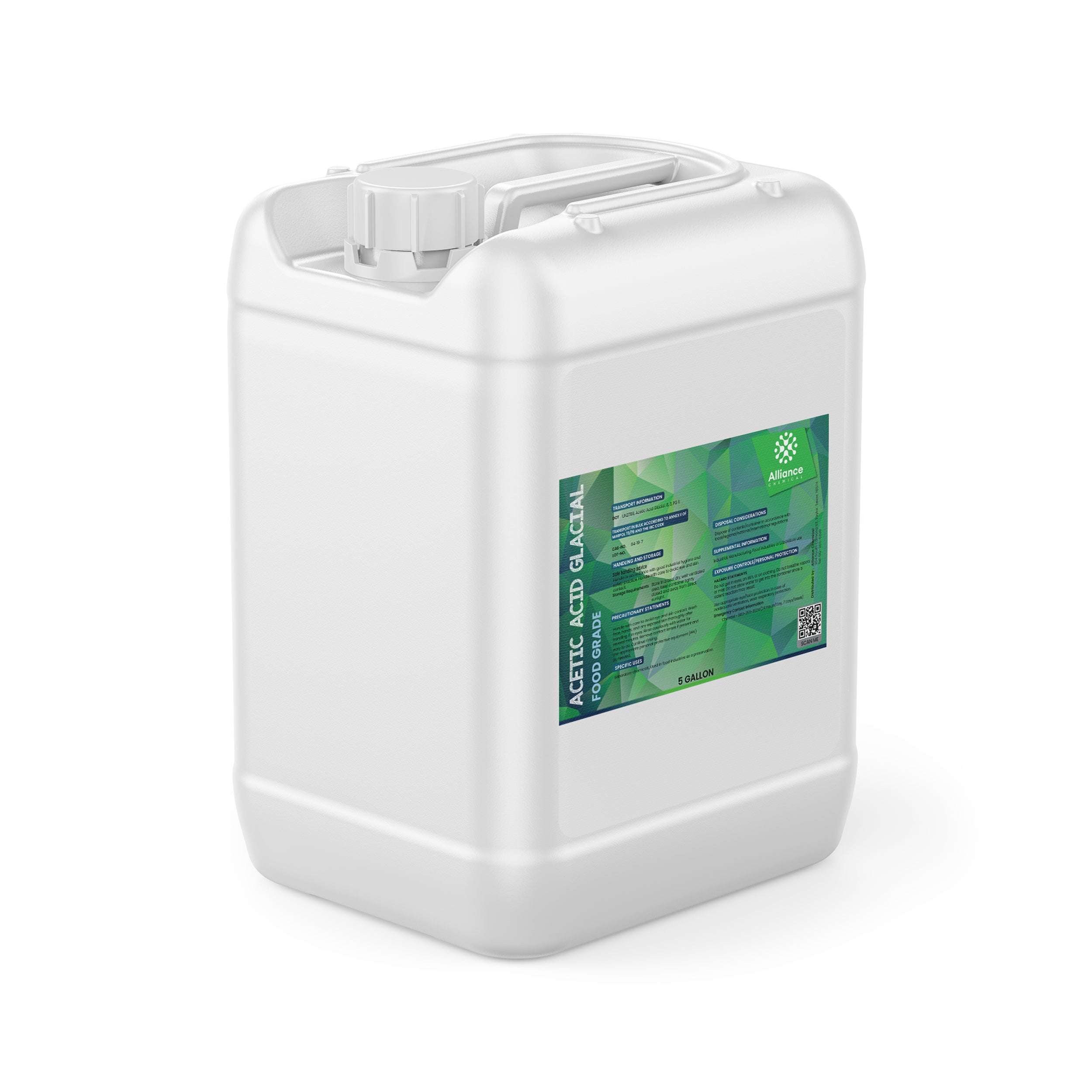

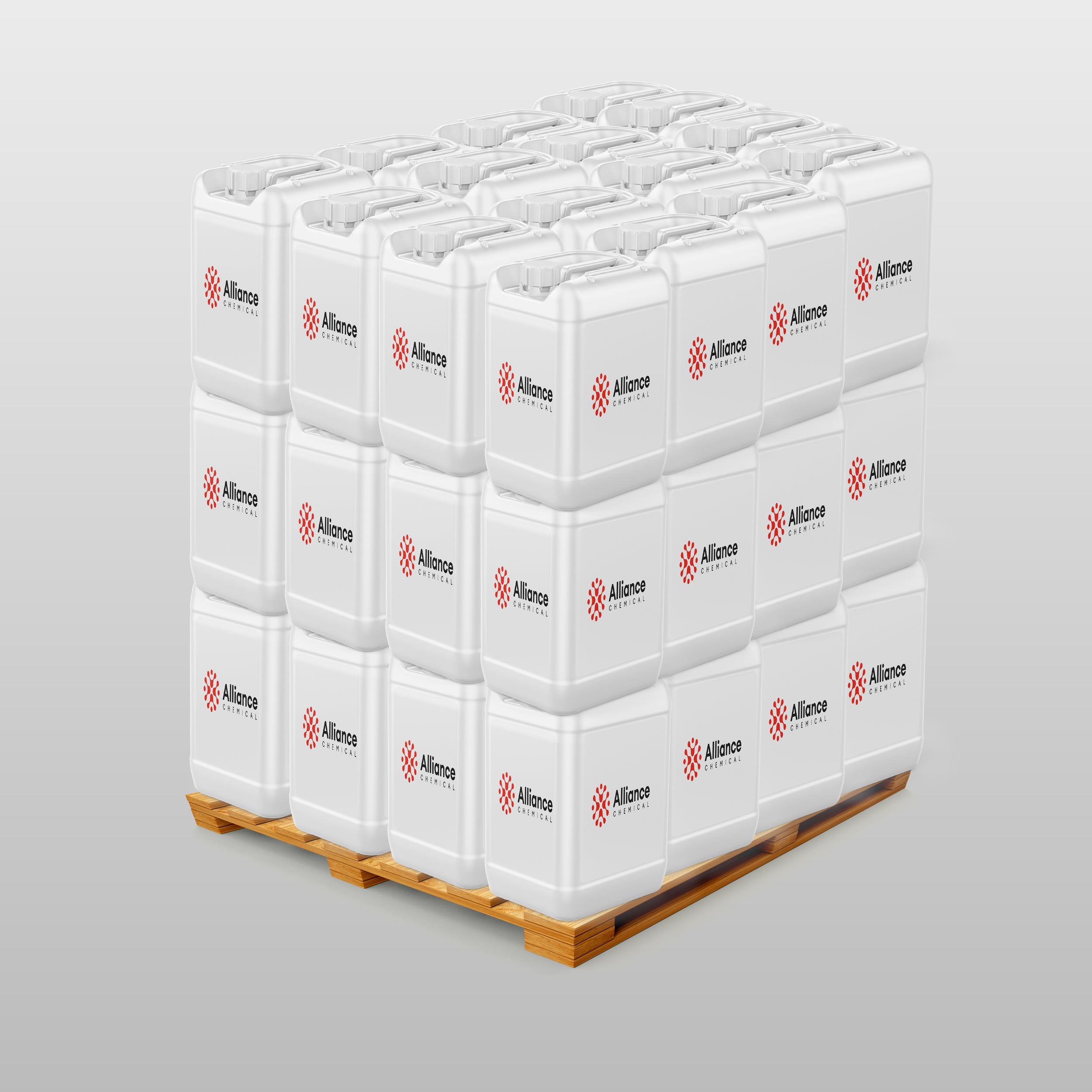
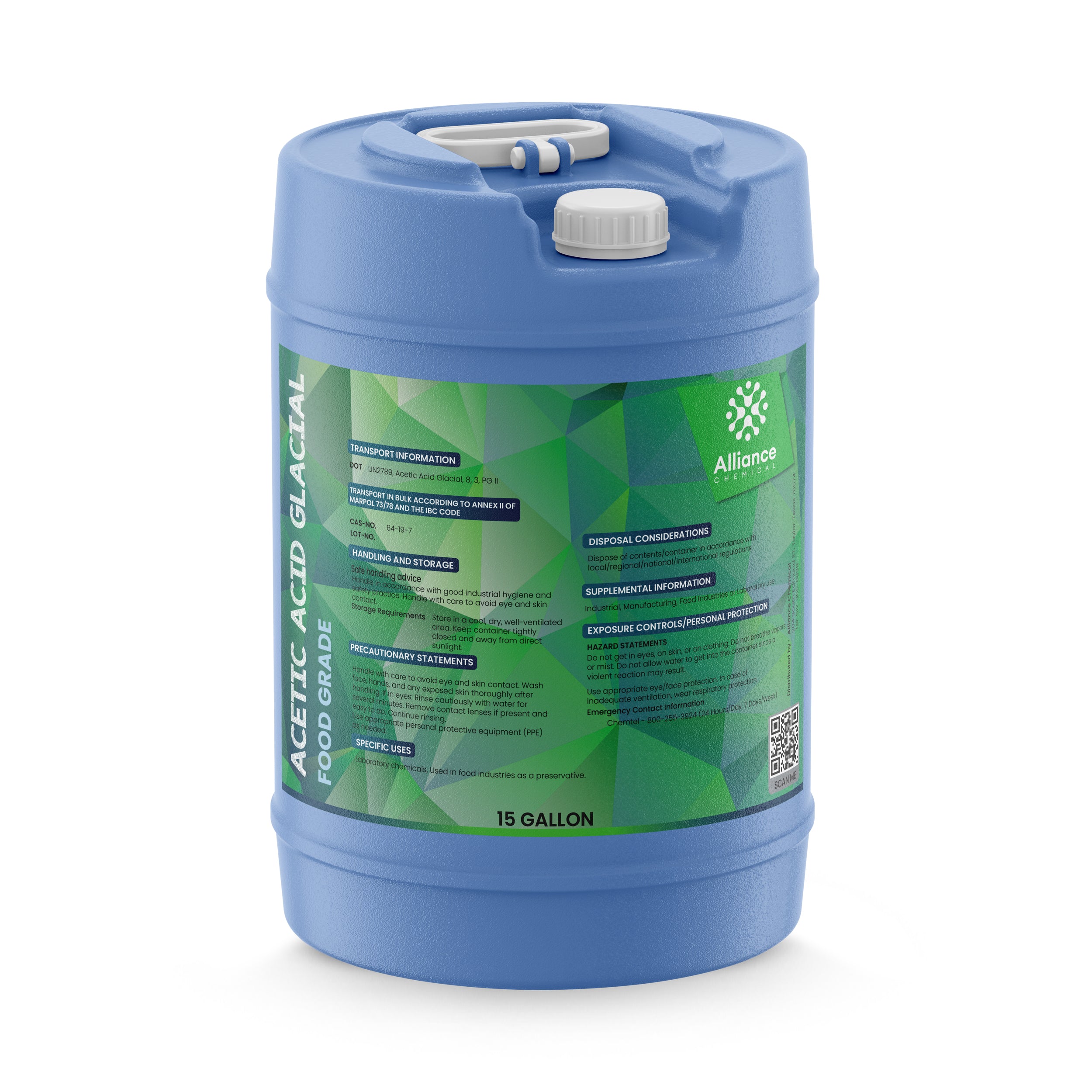
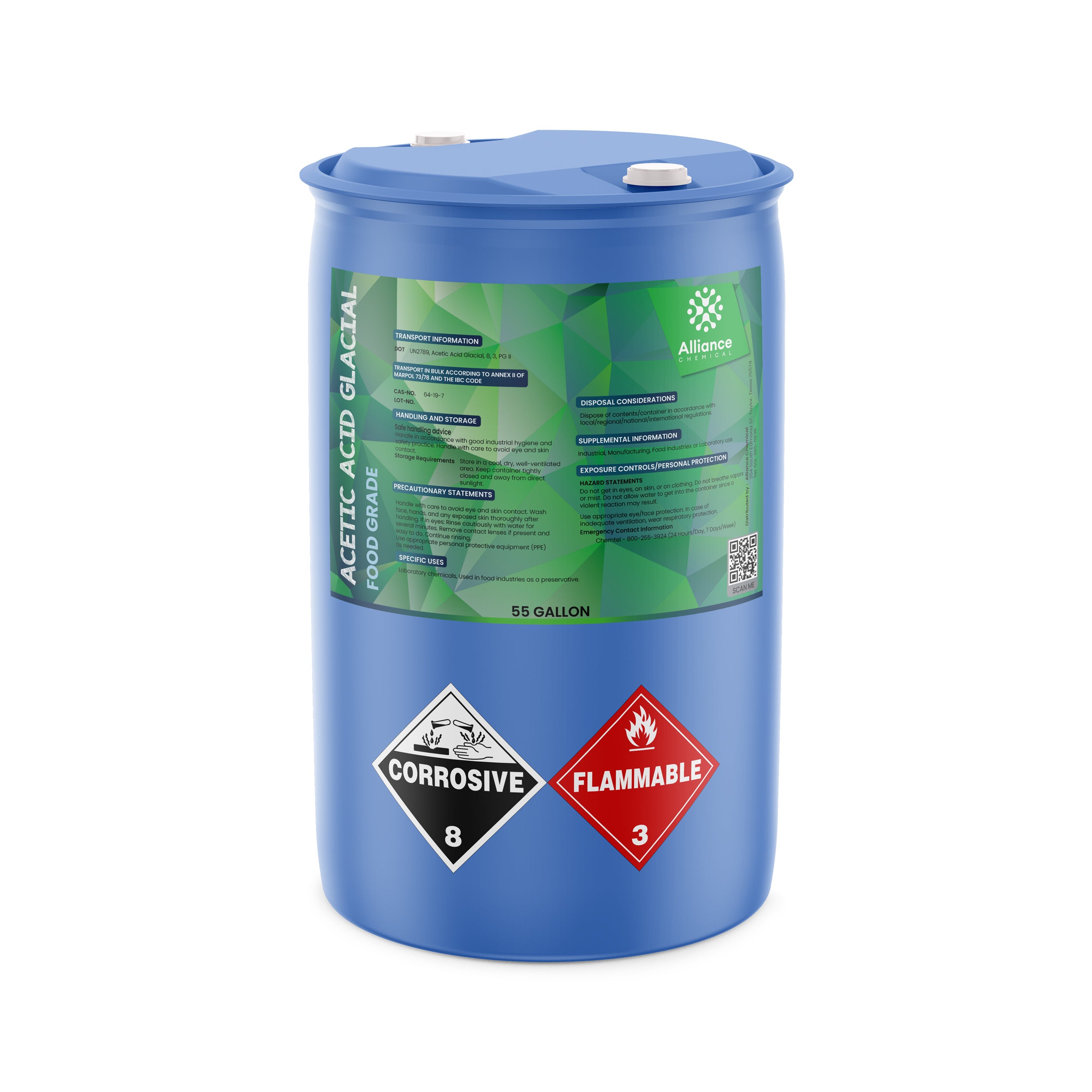
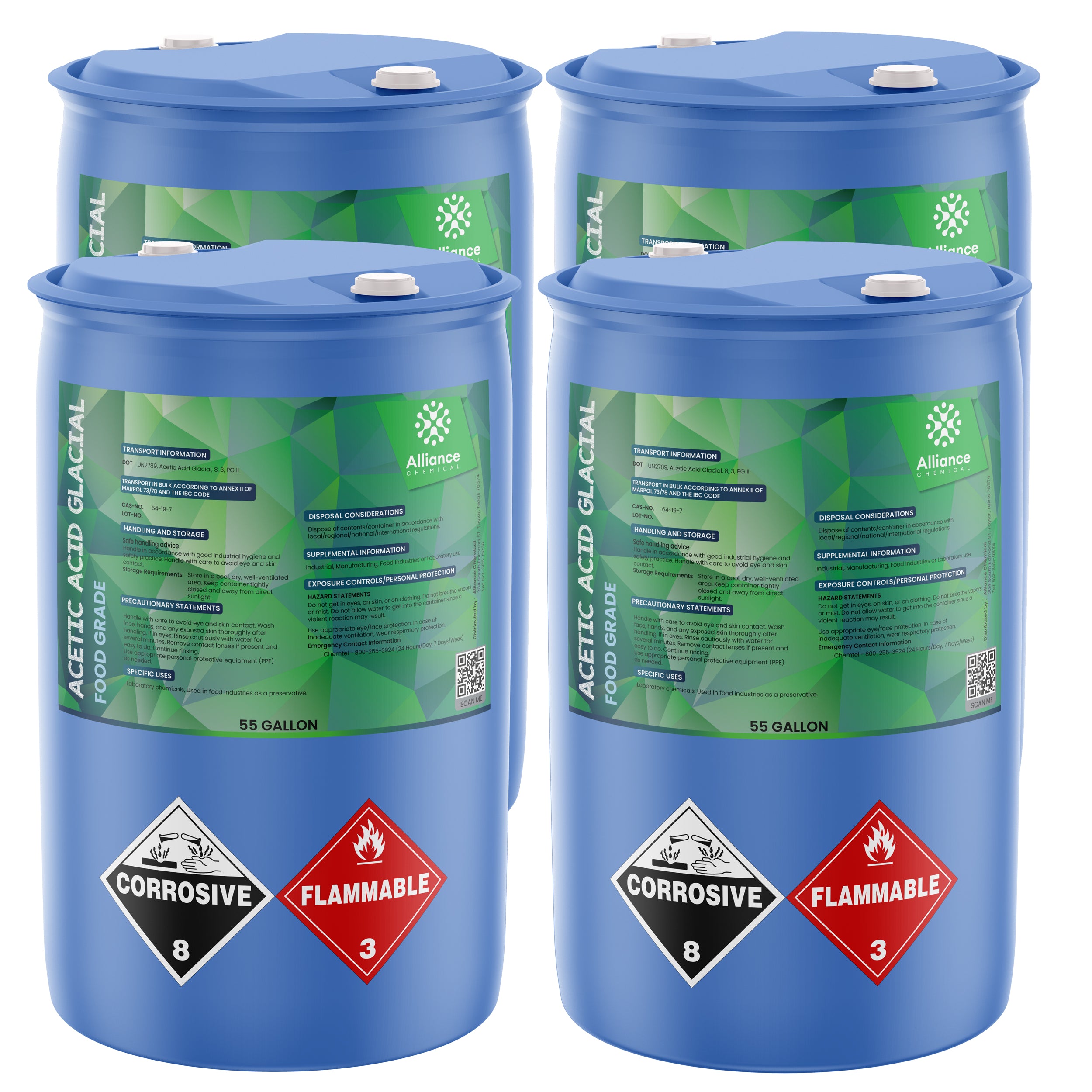
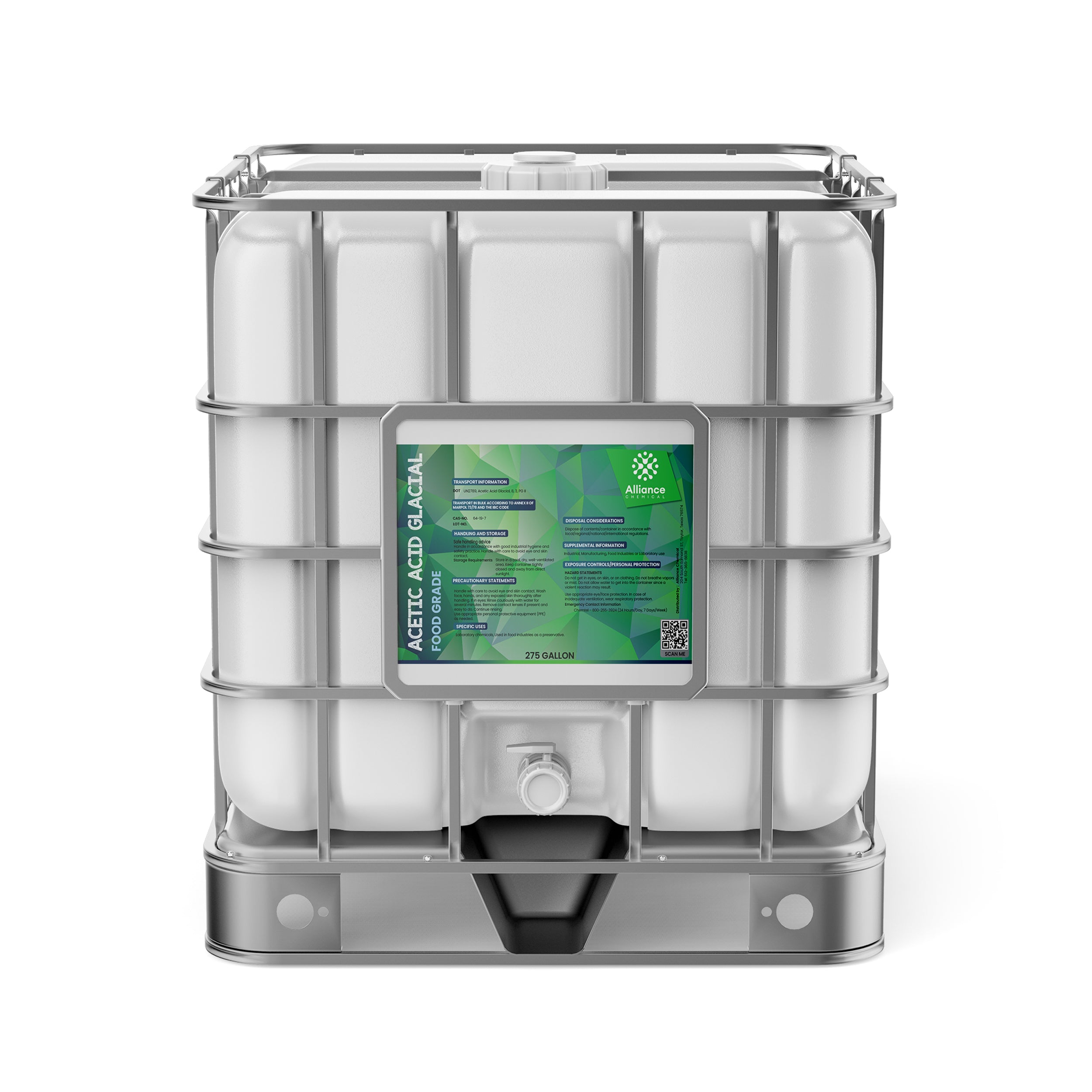

- Description
- Product Documents
Product Overview
Acetic Acid Glacial - Food Grade is a high-purity (approximately 99.7%), colorless liquid consisting of undiluted acetic acid (CH3COOH). Also known chemically as Ethanoic Acid, this product meets strict Food Grade specifications, ensuring low levels of heavy metals and impurities. It acts as a potent acidulant, flavoring agent, and preservative in industrial food processing. Due to its concentrated nature, it allows for precise acidity regulation in large-scale batch manufacturing.
This material is fully soluble in water and ethanol, making it essential for aqueous flavor systems, pickling brines, and fermentation control. With a density of 1.049 g/mL and a boiling point of 118°C, it is stable for standard industrial processing. All lots are verified by titration to ensure concentration consistency (99–100.5 wt%). Note: As a glacial acid, this product is corrosive and flammable (flash point 39°C/102°F) and requires proper Hazmat handling protocols.
Key Properties
- Chemical Name: Acetic Acid, Glacial
- Synonyms: Ethanoic Acid, Vinegar Acid
- CAS Number: 64-19-7
- Grade: Food Grade (FCC/USP standards)
- Purity (Assay): ≥ 99.7%
- Appearance: Colorless, clear liquid
- Odor: Strong, pungent vinegar-like
- Density: 1.049 g/mL at 25°C
- Boiling Point: 118–120°C
- Freezing Point: 16.6°C (62°F) - May solidify in cool storage
- Solubility: Miscible with water and ethanol
- Heavy Metals (as Pb): ≤ 0.5 ppm
Common Applications
- Food Preservation: Lowers pH to preserve shelf life and stability in commercial food products.
- Pickling & Brines: Primary acidulant used in the production of pickles, relishes, and acidified vegetables.
- Flavoring Agent: Provides the characteristic sharp taste in industrial sauces, dressings, and marinades.
- pH Control: Used to adjust acidity levels in fermentation processes and cheese production.
- Cleaning & Descaling: Effective for cleaning-in-place (CIP) systems in food manufacturing facilities to remove mineral deposits.
- Chemical Processing: Solvent and reagent for organic synthesis and pharmaceutical intermediates.
Safety & Handling
Hazmat Warning: Acetic Acid Glacial is Corrosive (Class 8) and Flammable (Class 3). It causes severe skin burns and eye damage. Use only in well-ventilated areas with appropriate PPE, including chemical-resistant gloves, goggles, and face shields. Store in a cool, dry area above 17°C (62°F) to prevent freezing/crystallization. Keep away from heat, sparks, and open flames. Refer to the Safety Data Sheet (SDS) for UN 2789 transport details and full emergency procedures.
Related Products
| Property | Value |
|---|---|
| Molecular Weight | 60.05 g/mol |
| Formula | CH3COOH |
| Assay | 100% |
| Flash Point | 39 |
| Solubility | Miscible with water, alcohol, and many organic solvents |
| Appearance | Colorless, clear liquid |
| Melting Point | 16 °C |
| Boiling Point | 118 °C |
Other top rated products

















D0L-JIL-WKX
$24.35
Liquid error (snippets/product-blocks line 100): divided by 0
Off
Unit price
/
Shipping Notice: Possible Hazmat Fees
💡 Smart Shipping Tip: Quart & Liter Sizes Often Avoid Hazmat Fees
This size may be classified as hazmat and can incur additional carrier fees. See shipping guide
- ✅ Good news: 1 Quart containers qualify as "Limited Quantity" and bypass hazmat rules
- 💡 Pro tip: Order multiple 1 Quart containers to avoid hazmat fees entirely
- 💰 Hazmat fees can get expensive - especially for larger containers (carrier charges, not our markup)
- 🚚 Ground shipping only - no expedited options for sizes over 1 Qt/1L
Required by 49 CFR § 173.150 for chemical containers larger than 1 quart. Actual fees shown at checkout. View our complete shipping guide →
✅ Great Choice! No Hazmat Fees
1 Quart containers qualify as "Limited Quantity" and avoid hazmat shipping fees.
- 🚀 Faster shipping: Eligible for expedited shipping options including air transport
- 💰 No hazmat fees: Ships as "Limited Quantity" per DOT regulations
- 📦 Convenient size: Perfect for testing or smaller applications
- ♻️ Smart choice: Order multiple quarts to get the volume you need without hazmat charges
Exempted under 49 CFR § 173.150 Limited Quantity provisions for containers ≤1 liter/quart. Learn more in our shipping guide →
Size:
Variation:
-
$24.35Delivery every$23.13
-
$33.92Delivery every$32.22
-
$48.65Delivery every$46.22
-
$72.83Delivery every$69.19
-
$52.83Delivery every$50.19
-
$84.40Delivery every$80.18
-
$139.15Delivery every$132.19
-
$4,228.16Delivery every$4,016.75
-
$200.18Delivery every$190.17
-
$760.41Delivery every$722.39
-
$5,580.66Delivery every$5,301.63
-
$512.79Delivery every$487.15
-
$1,529.22Delivery every$1,452.76
-
$5,002.79Delivery every$4,752.65
-
$5,500.00Delivery every$5,225.00
-
$6,270.00Delivery every$5,956.50
Compare Products
| Price |
|---|
| SKU |
| Rating |
| Discount |
| Vendor |
| Tags |
| Weight |
| Stock |
| Short Description |
